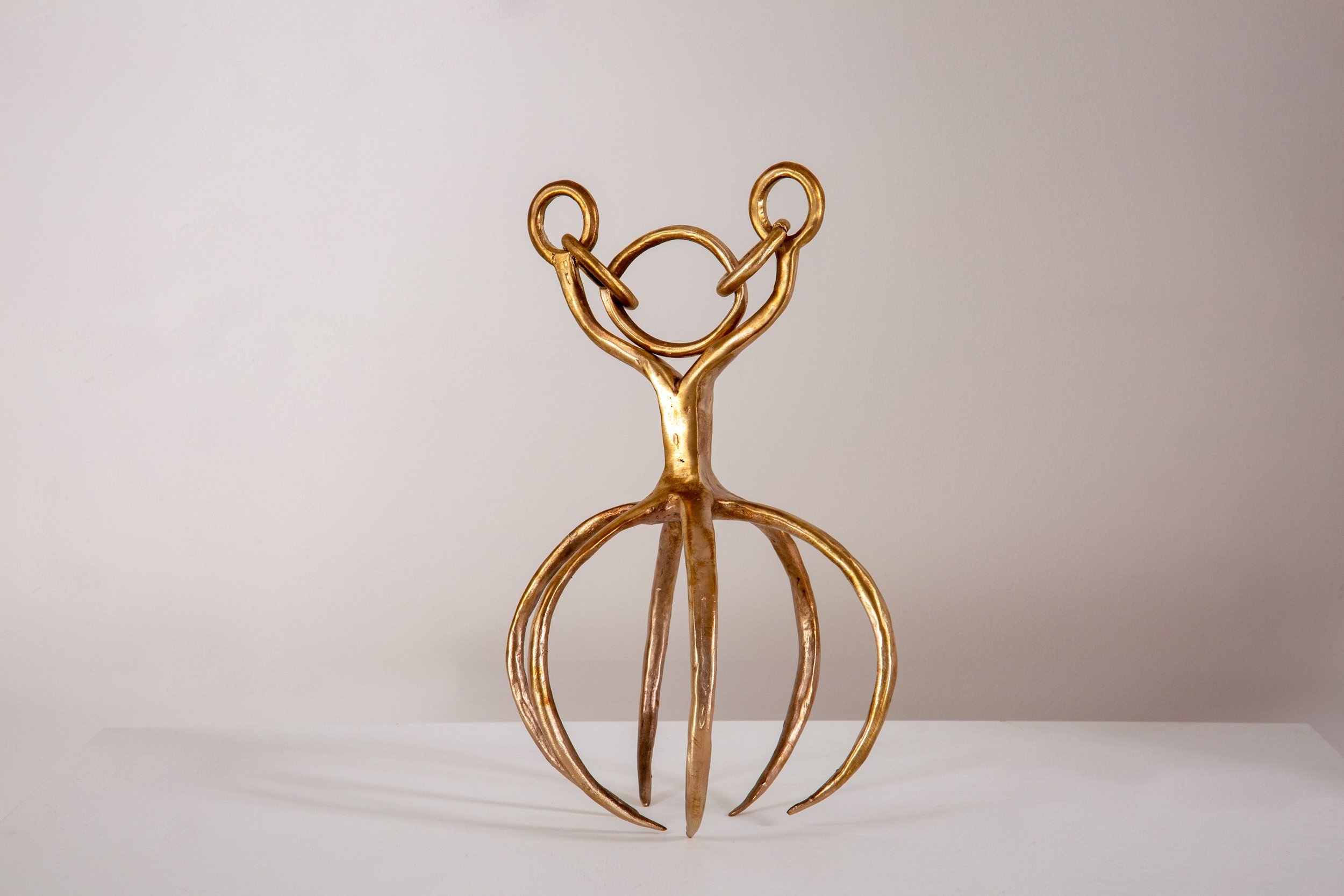According to the medieval text of Jacobus de Voragine’s Golden Legend (Legenda Aurea, c. 1275), St. Agatha was a Christian virgin who lived in the city of Catania c. 253 CE. When she would not pray to idols, the provost of Sicily, Quintianus, ordered her tortured. Agatha’s breasts were removed, but she was miraculously healed. Quintianus then ordered her burned, and she died soon after. Driscoll’s Shielding Triptych seems to expand the form of Agatha, summoning her protective nature as the patron saint of breast cancer patients. Standing before these gilded objects, viewers may also be reminded of the Amazons, the race of warrior women who, according to Greek legend, easily wielded heavy armor in battle. According to ancient tradition and recounted by Christine de Pizan in her Book of the City of Ladies (Le livre de la cité des dames, 1405), “[I]t was [the Amazon’s] custom that . . . the most noble of them would have the left breast [removed] . . . in order to free them up to carry a shield.” While such accounts suggest that Amazonian mastectomy was an act of choice, even agency, this was not the case for Agatha or countless others throughout history. Driscoll’s Iron Spiderserves as a chilling reminder of this. The artist identifies the sculpture as an interpretation of a medieval torture device reportedly used to remove women’s breasts, specifically as a punishment for self-induced abortion.
-Tanja L. Jones, Ph.D., Department of Art and Art History, The University of Alabama

